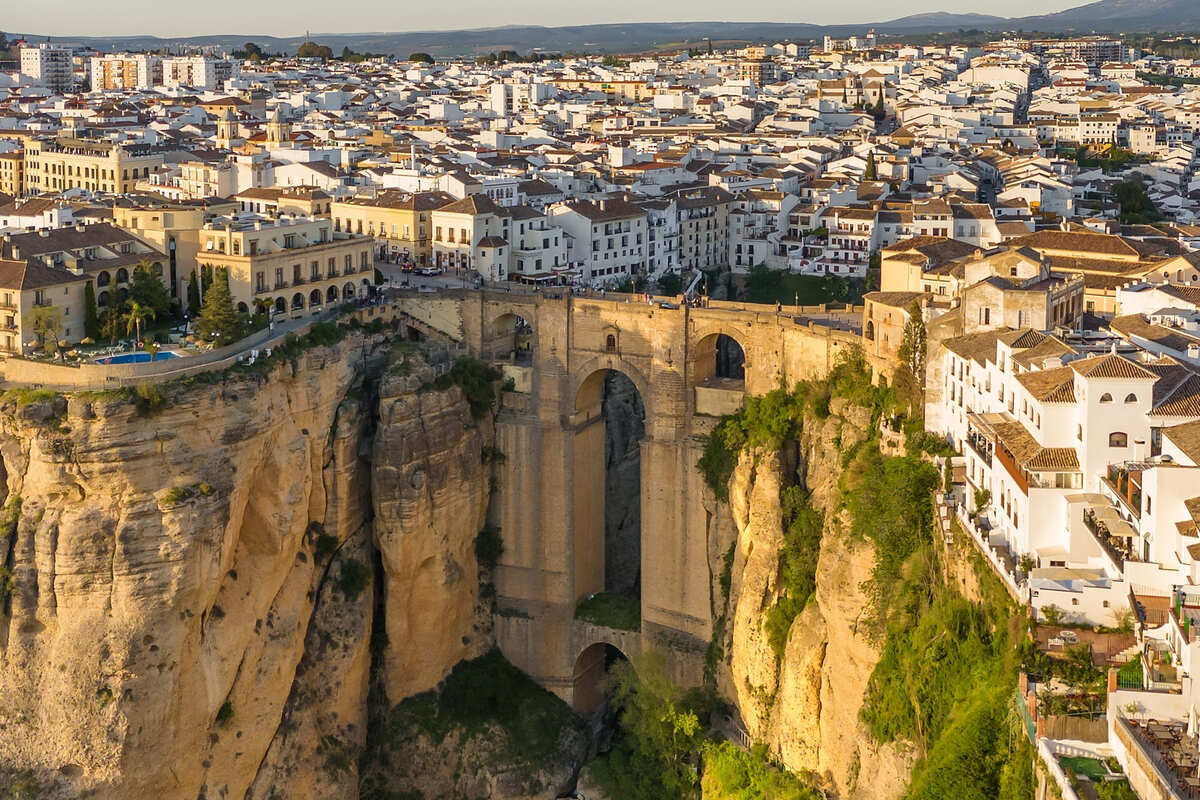Share the article
Last updated
With a multi-millennial history, great beaches and host to some world-class cities, Spain is one of the most popular destinations in Europe this fall, but there’s this small caveat most tourists don’t take it into account before booking a trip.
Until… they get water sprinkled on them while they are quietly eating.

In tourist hotspots such as Madrid, Barcelona and Mallorca, the local population has had it with touristsand from attacking them with water guns to organizing mass protests while they chant ‘Fuera!‘, they’re not exactly happy that you’re coming in October to add to their overtourism problems.
Take it from us: between the increasing crowds and increasing hostility towards guests, certain parts of Spain are best avoided right now, but not all:
Stay there 4 beautiful destinations that are just as cultural (and just as warm) this season:
Almeria


A medieval gem on the crystal-clear Mediterranean, you’d expect Almeria to be one of Spain’s busiest coastal towns, especially considering its well-preserved old town, with its colorful, winding streets and a towering 16th-century cathedral.
Like busy Granada, it is dominated by a Moorish fortress, which sits atop a prominent hill overlooking the city maze of narrow passages below, possibly one of the largest of its time still extant in mainland Spain.


Surprisingly, if there is any agglomeration at all, it is mainly Spaniards who escape from Sitges and Alicante, colonized by Great Britain and Germany. And if you’re wondering how well you can do that eat under $40 a day, my friend, you’re in for one treat.
The casual seaside eatery Goleta Cabo de Gata offers inexpensive Mediterranean fare from just $11.
If you’re strolling along Cathedral Square in the evening, make sure you stop by nearby La Mala for a drink and a cheeky tortilla.
Ronda


While the sun-drenched southern region of Spain is Andalusia best known for its Costa del Sol, which includes iconic leisure destinations such as Malaga and Marbella, and unusual places such as Ronda, hidden in the mountainous interior, have retained pristine, native charm.
There are no beaches, shopping centers or luxury resorts.
This is a picturesque town perched atop two cliffs, connected by a historic stone bridge over a 400-foot gorge and a scenic river.


From the Plaza de Toros, the oldest bullfighting ring in all of Spain, and a 18th century wonder Built in a neoclassical style, right down to the much older, 13th-century Arab baths and every picturesque square and cliffside walkway between them, Ronda is littered with historic monuments.
Oh, and if you’re wondering if you should bring some extra layers in case it’s cold, we recommend keeping those summer shorts in your bag: Ronda is part of the hottest region in the world. all of Europe, and that is not unusual 76°F most days in October.
Lugo


We head to the northwestern side, namely a charming, yet overlooked town in the Galician hinterland called Lugo, home to just over 100,000 people, and a walled citadel still surrounded by Roman walls that are on the UNESCO World Heritage List.
They are the only ones of their kind left intact, and if you’re wondering if you can walk with it, the answer is a resounding one Yes.
The 2 km circuit offers breathtaking views of Lugo’s church towers and whitewashed houses passes 10 city gates.


Other sights include the 3rd century Roman Bridge and St. Mary’s Cathedral, also a UNESCO World Heritage Site protégé known for its marble ambulatory and colonnade – and the best part is: none of the crowd of pilgrims seen in neighboring Santiago de Compostela!
Looking for something unique to do in tourist-free Lugo?
Stroll through the city center and discover Lugo’s nationally famous murals depicting Roman emperors like Julis Caesar, as well as innovative graffiti and other quirky street art.
Cartagena


Taking the train back south to the sunny Mediterranean, Cartagena is our last stop on this one-way journey to discover Spain’s most beautiful gems this fall, and if you loved Lugo for its antiquity and Old World allure, then wait until you see it this:
A bustling port on azure waters, Cartagena has been coveted by many empires over the millennia, from the Carthaginians, who gave it its name, to the Romans and the Moors, and that multiculturalism shows.


Try to name another city where you have Carthaginian walls that predate the birth of Christ and a virtually intact ancient Roman theaterbut also rows upon rows of 20th-century, ornate Art Nouveau facades and a bustling cruise port surrounded by luxury hotels and lively beach bars.
Aside from its priceless cultural value, Cartagena is much more affordable than your usual Barcelonas and Valencias: hotels start from a cheap $58 per night this season, and you would find it hard to believe that this is Mediterranean Spain with the relaxed atmosphere and absence of crowds.


✈️Join our Travel Off Path community forum: Where travelers come together, ask questions, share experiences and even find like-minded travel companions!
SUBSCRIBE TO OUR LATEST POSTS
Enter your email address to subscribe to the latest Travel Off Path breaking travel news, delivered straight to your inbox.
This article originally appeared on TravelOffPath.com
The opinions expressed here are solely those of the author, and not those of any bank, credit card issuer, hotel, airline or other entity. This content has not been reviewed, approved, or otherwise endorsed by any of the entities included in the post.





